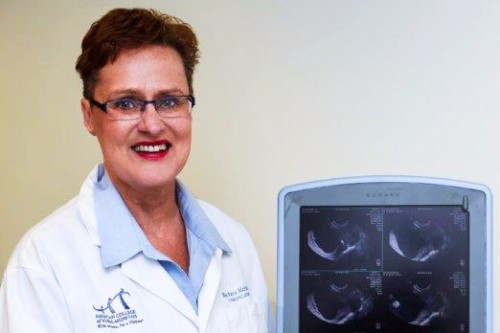New Ultrasound Technique Helps Predict Risk of Preterm Births
Posted on 26 Jan 2024
In the U.S., more than 10% of pregnancies result in preterm births. Traditionally, the only way to assess a woman's risk of preterm birth has been based on her past experiences with premature deliveries. This approach leaves a significant gap in risk assessment, particularly for first-time pregnancies. Now, researchers have developed an ultrasound-based method to predict the likelihood of preterm birth in expectant individuals.
This innovative method, a culmination of over two decades of collaborative work between nursing and engineering researchers at the University of Illinois Chicago (UIC, Chicago, IL, USA) and the University of Illinois Urbana-Champaign (Champaign, IL, USA), employs quantitative ultrasound to detect microstructural changes in the cervix. Unlike traditional ultrasound, which generates images from data, quantitative ultrasound involves a standard ultrasound procedure but focuses on analyzing the radio frequency data to assess tissue characteristics. A study involving 429 women who had natural childbirths at the University of Illinois Hospital demonstrated that this new technique effectively predicts preterm birth risks in first-time pregnancies.

Furthermore, for women in subsequent pregnancies, combining quantitative ultrasound data with their delivery history proved more accurate in risk assessment than relying solely on their obstetric history. The researchers found that this ultrasound method can be used as early as the 23rd week of pregnancy. If clinicians can identify a risk of preterm birth at this stage, they might schedule additional appointments to monitor the fetus more closely. Until now, there hasn't been a routine method to assess the risk of preterm birth so early in pregnancy, leaving a gap in understanding what interventions could effectively delay labor. This groundbreaking study opens new avenues for other researchers to explore potential strategies for preventing or postponing preterm births.
“Today, clinicians wait for signs and symptoms of a preterm birth,” such as a ruptured membrane, said lead author Barbara McFarlin, a professor emeritus of nursing at UIC. “Our technique would be helpful in making decisions based on the tissue and not just on symptoms.”
Related Links:
University of Illinois Chicago




 Guided Devices.jpg)









